As eighth-generation breeders and seasoned judges of this breed, we often field the question: “What makes Brahman cattle different from other cattle breeds?” Having spent decades meticulously selecting and studying their distinct features, we’ve gained a deep understanding of what sets these red and grey giants apart from other cattle.
Let’s dive into the unique physical traits that define a Brahman. We’ll also debunk some common myths about their famous humps. Whether you’re a Brahman novice or a seasoned enthusiast, join us as we explore the reasons behind their unique, heat-defying physique, perfectly adapted to outlast the heat where other cattle breeds struggle. Once you know what to look for, spotting Brahman characteristics becomes second nature.
The Cow with a Hump on its Back: Nature’s Heat Management System
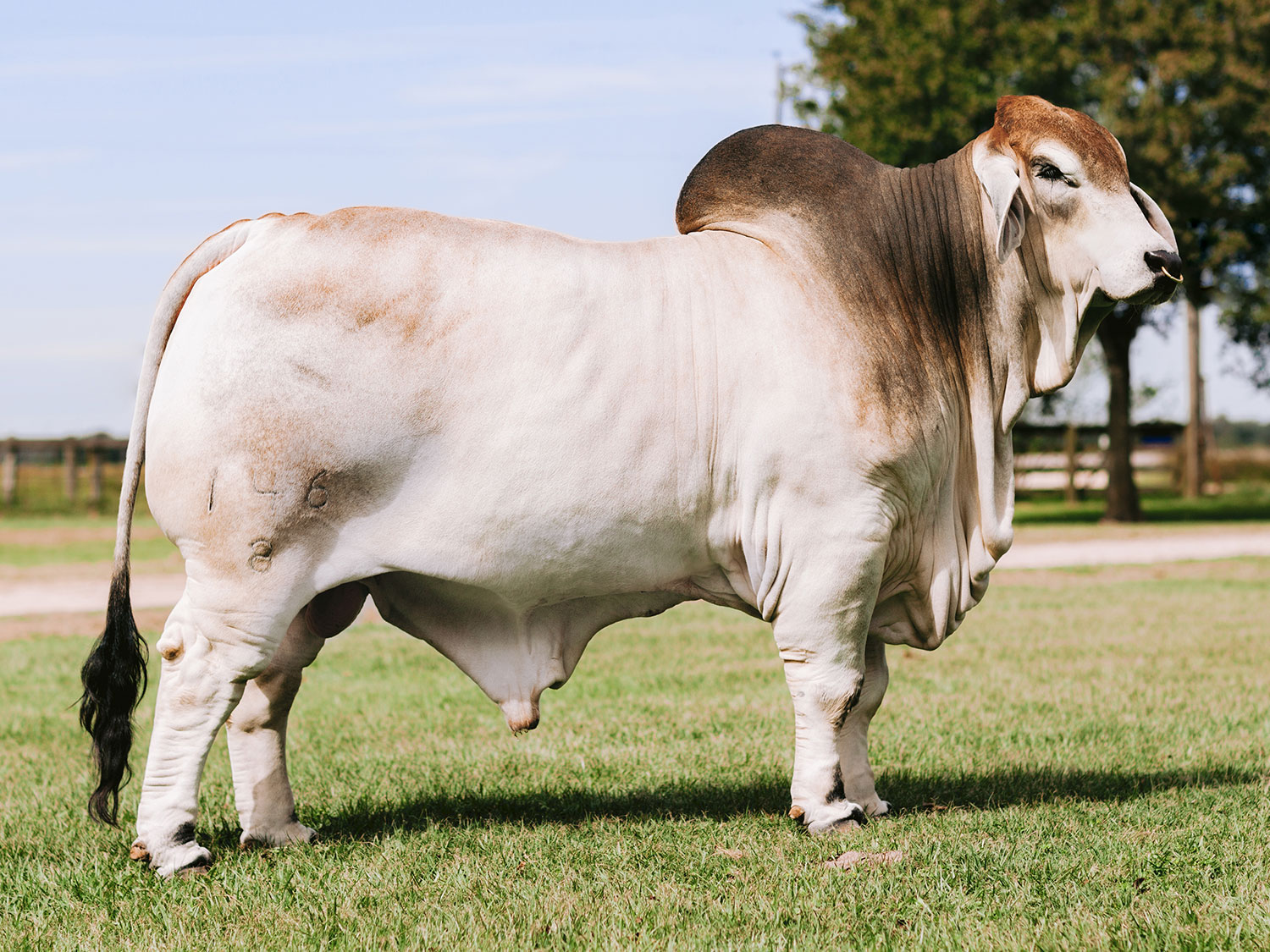
The Brahman’s most striking feature is undoubtedly the hump situated between their shoulder blades, contributing to their commanding presence. Both male and female Brahmans have the signature hump. Contrary to popular belief, these humps don’t store water. It is simply a large muscle (called the cupim) that is protein-packed and delicious (yes, you can eat Brahman beef!)
Brahman Ears: Natural Coolers
Brahman ears are remarkably large and pendulous, far wider than their heads (just like the ears on an elephant!). These floppy ears aren’t just for show; they play a crucial role in heat release, with a large surface area designed to help regulate their body temperature. They’re also equipped with abundant sweat glands for extra cooling, making them well-suited for tropical and subtropical climates.
Loose Brahman Skin and Folds: Designed for Heat Regulation
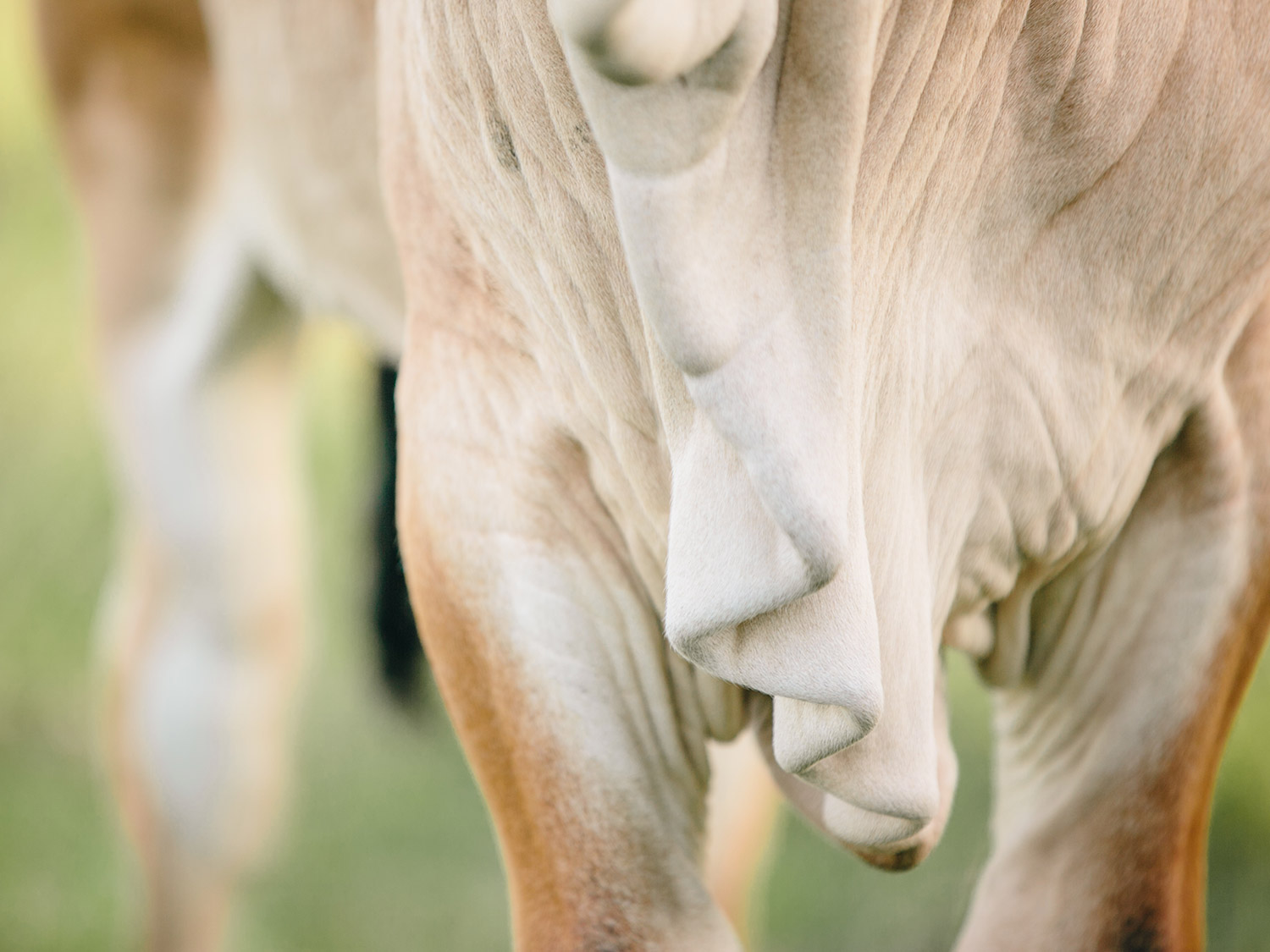
Below their chins, Brahman cattle sport distinctive skin folds known as dewlaps, complemented by a loose hide that serves as a barrier against pests and the sun’s harsh rays. Just like how we might wear loose, light-colored clothing on a hot day to stay cool and avoid sunburn, the Brahman’s loose skin acts as a protective layer against the sun.
This extra skin coverage also enhances their natural cooling mechanism through increased sweat glands. In fact, Brahman cattle have about four times as many sweat glands as other cattle breeds, which is why they’re ideal for breeders living in hot, humid environments.
The extra skin also means increased blood vessel distribution, which helps regulate body temperature. Just like humans, when it’s hot outside, the blood vessels near the skin’s surface expand, allowing more blood to flow to aid in cooling down. Unlike non-Brahmans, you’ll often find purebred Brahman out grazing during the heat of the day. They are born sunbathers!
50 Shades of Brahman
Brahman coats can dazzle in many colors, although officially, they fall into two categories: Red and Grey.
The American Brahman Breeders Association (ABBA) says that all Brahman calves must be classified as either red or grey at the time of their registration. However, within these categories, Brahman coats can range from a bright, crisp white to a deep, rusty red. Some Brahmans are light, silvery grey, while others are darker, almost charcoal grey.
Our V8 herd features black pigmentation in their nose, eyes, and reproductive areas. Brahman coat patterns are as varied as they are beautiful, from speckles and spots to solid and substantial.
Certain colors and patterns are not desirable in Brahman cattle. For instance, ABBA guidelines disqualify albino (a true white), brindle (a color pattern characterized by dark streaks on a gray or tawny background), or gruella (harder to describe but almost like a muted mix of different shades that don’t quite fit into the standard red or grey categories – and don’t have a black nose and tail).
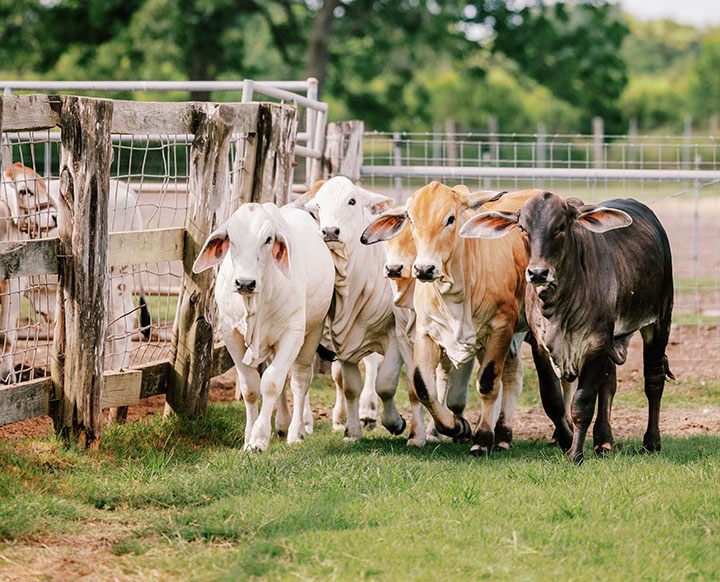
Horned vs. Polled: Breeder’s Choice
Brahman cattle are a horned breed, but many breeders prefer them without. “Polled” refers to an animal born without horns, which is a trait passed down genetically.. At V8 Ranch, we appreciate the diversity of the Brahman breed. We know that whether a Brahman has horns or is polled, what really matters is the quality of the animal.
Adaptability: The Ultimate Survival Trait
The Brahman’s unique physical characteristics are not by chance; they result from generations of adaptation to survive and thrive in some of the most extreme environments on Earth. Their remarkable traits are why ranchers continue to integrate Brahman genetics into new breeds, seeking to harness their resilience and heat tolerance. For example, in 2024, Saqib and Muhammed Bilwani from Bilawi Cattle & Goat Farms in Pakistan came to our Houston-area ranch to see V8 Ranch cattle in person – and invested in the semen of 10 different V8 bulls in order to bolster their home herd.
Brahman Cattle: Nature’s Masterpiece of Resilience
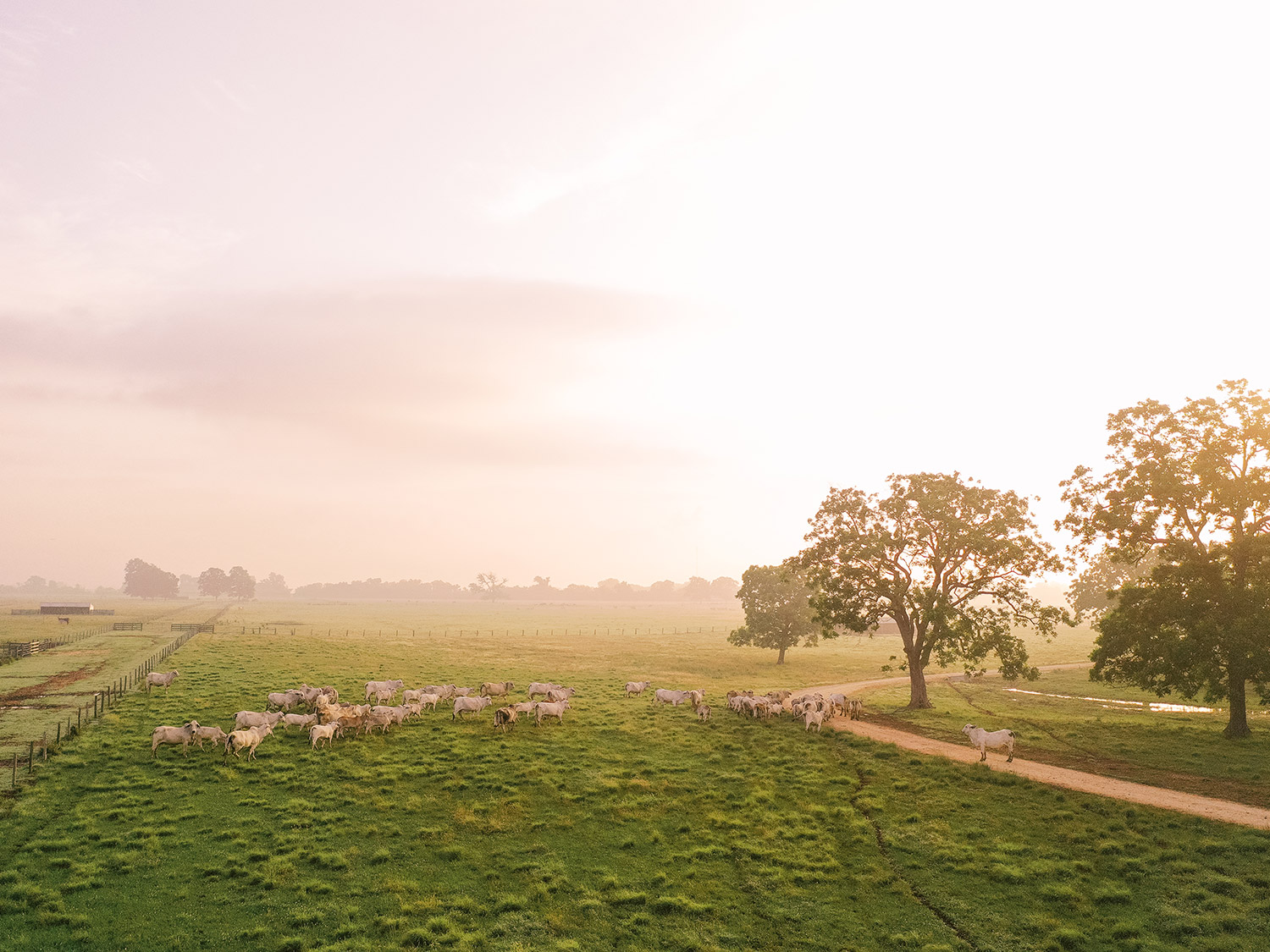
Now that you know how to identify Brahman characteristics, you can truly appreciate how these animals are a remarkable example of evolutionary adaptation. Their genetic blueprint is a testament to survival and efficiency in extreme climates. If you’re curious about Brahman standards or want guidance selecting the right cattle, we’re here to help.
Having been in the Brahman industry since 1944, V8 Ranch has a long and storied history of breeding premium, award-winning cattle. Whether your goals lie in the show ring, enhancing the genetics of your own herd, or expanding your commercial operations, we have the experience and knowledge to help you achieve them. When you work with V8, you work with family. We treat every client how we want to be treated – with respect, integrity, and transparency. Our relationship lasts long after the ink is dry.
Contact us to schedule your complimentary tour or learn about our premier genetics program and discover the V8 Ranch difference.

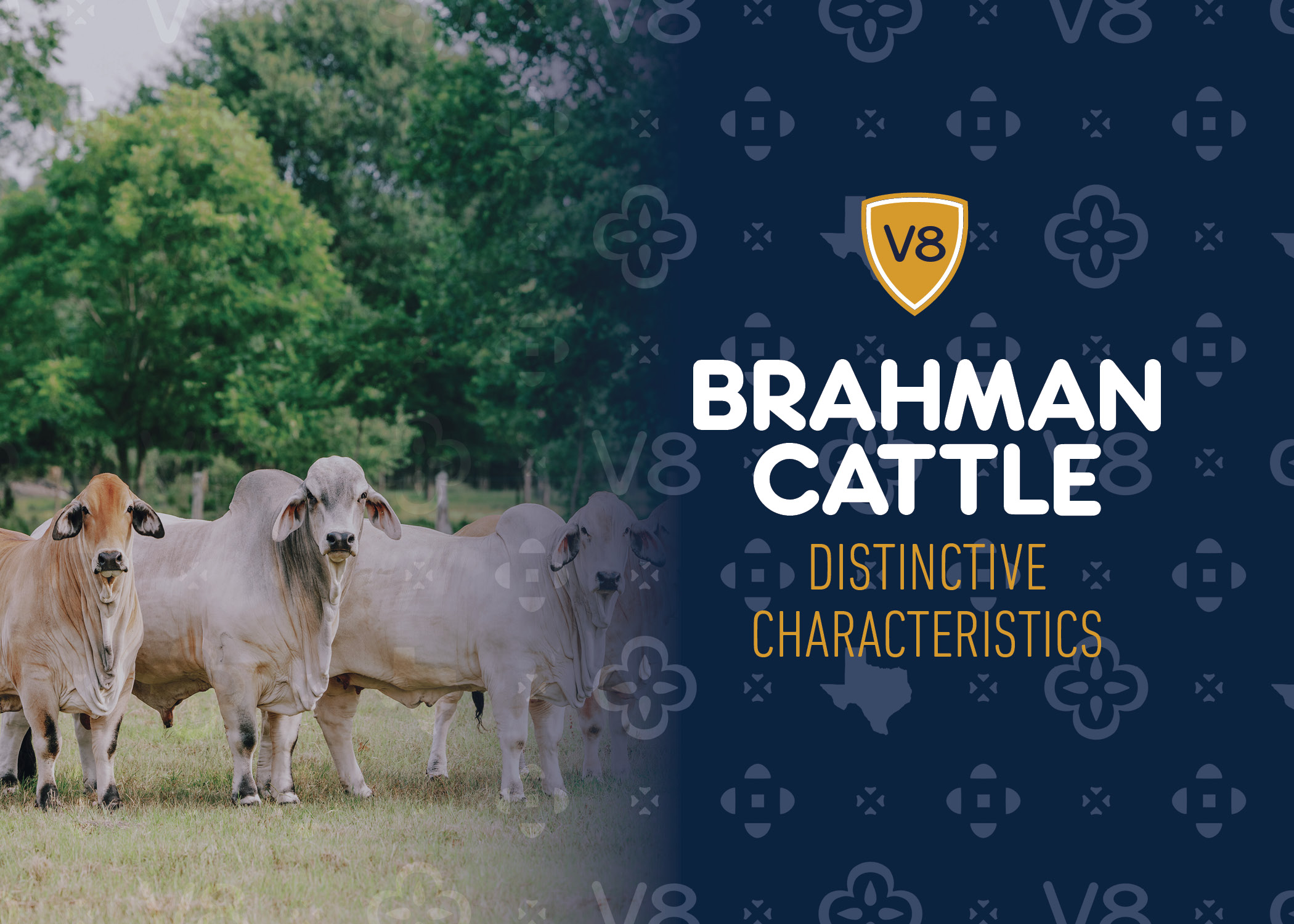
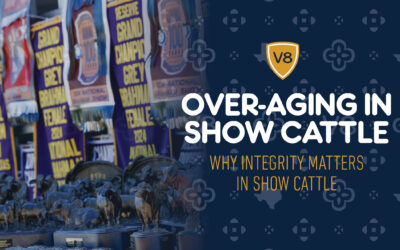

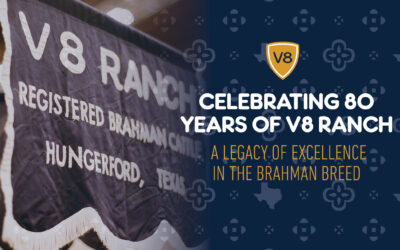

0 Comments